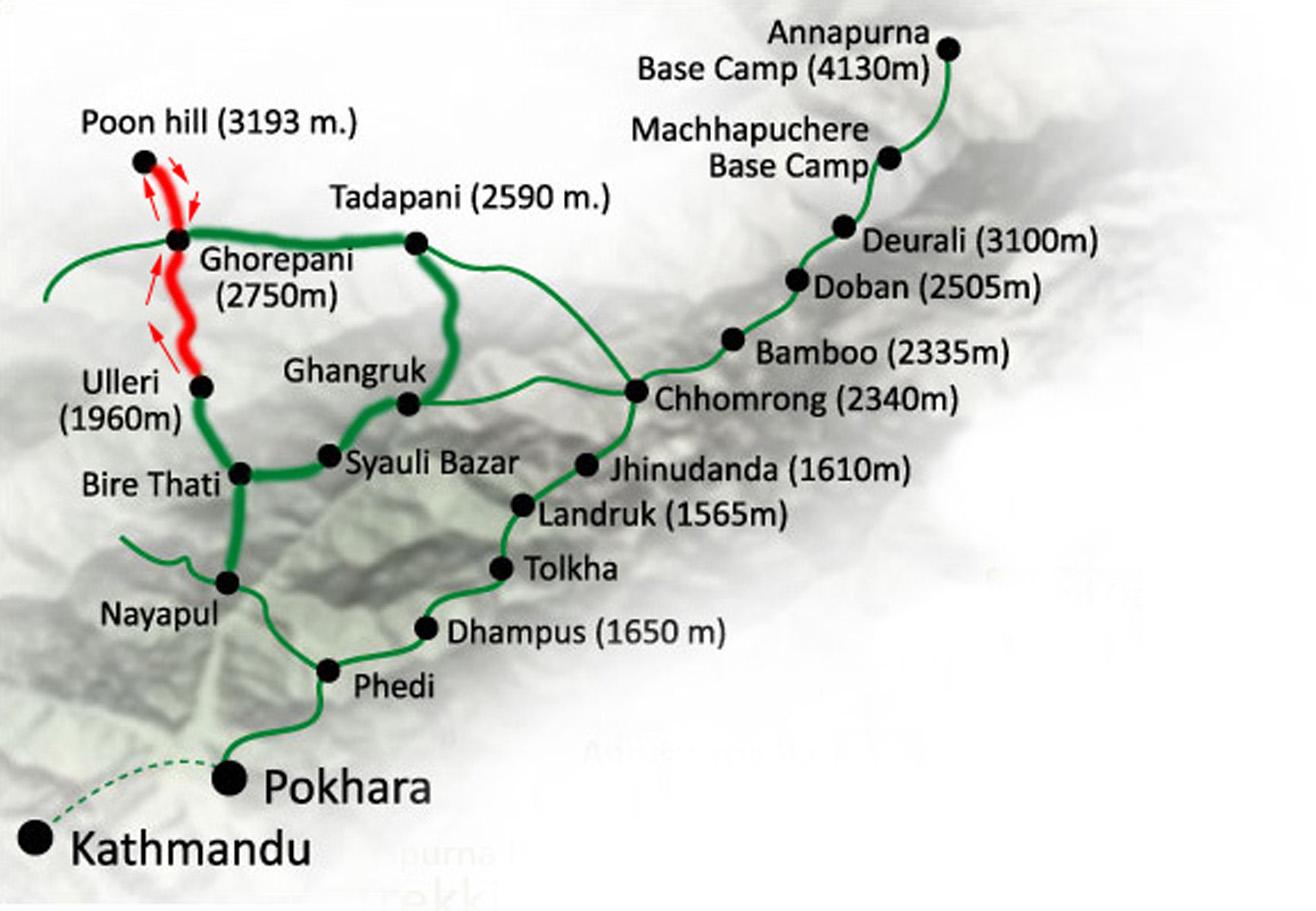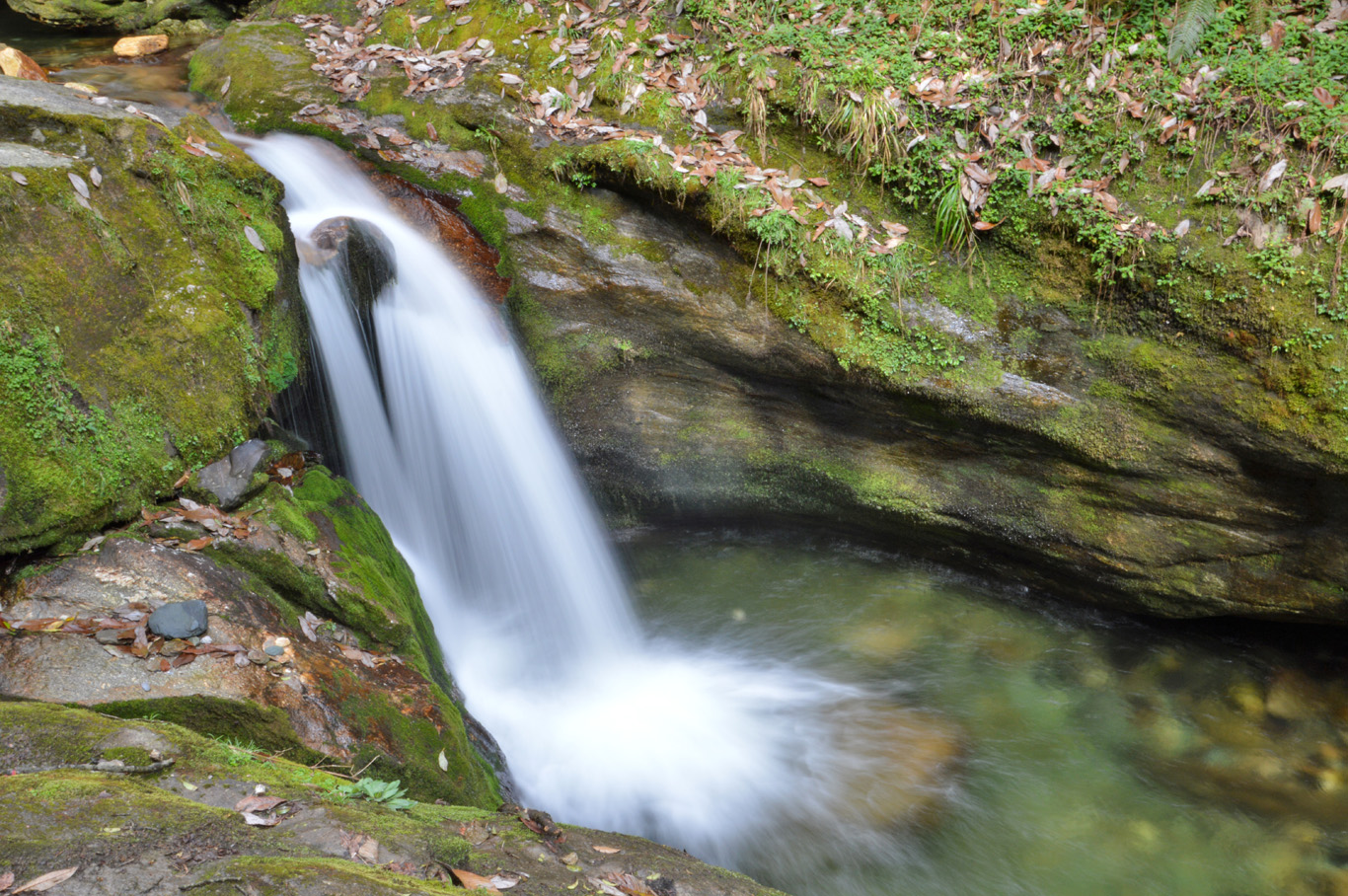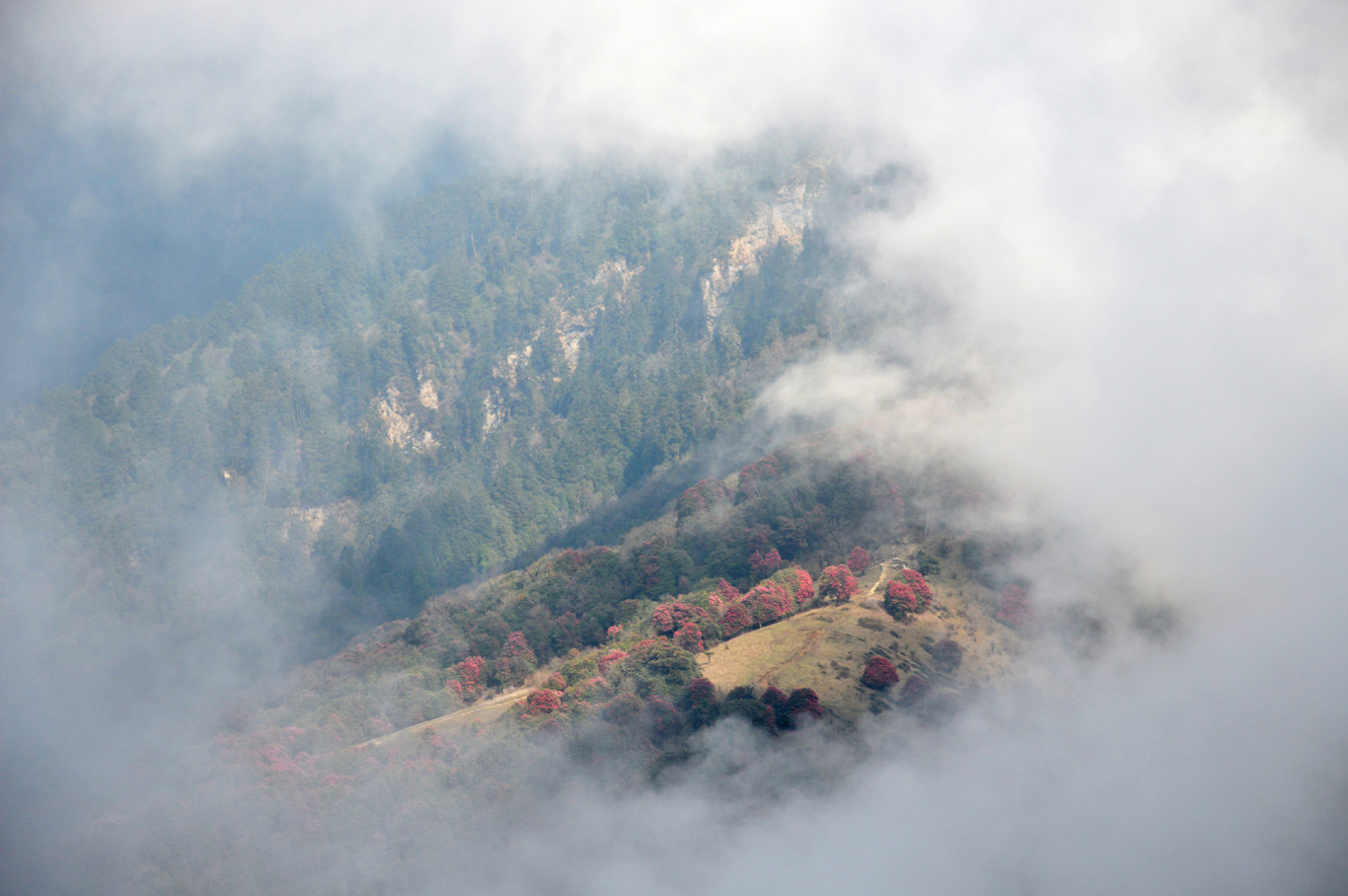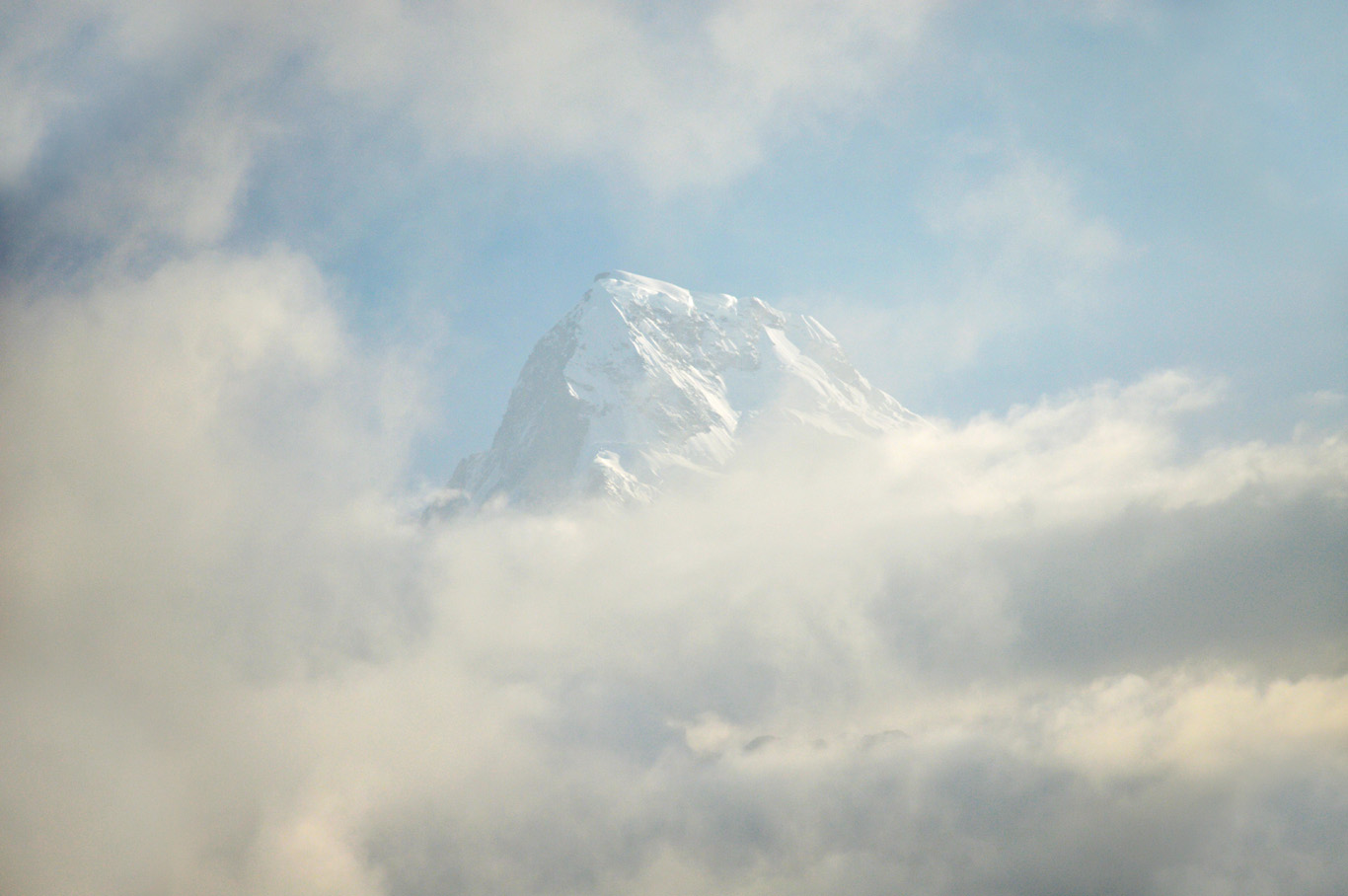On the second day of the extraordinarily beautiful trek to Poon Hill, we left the cozy village of Ulleri at sunrise and headed uphill towards another village - Ghorepani. Ghorepani is located at the elevation of 2750 meters and it differs from other towns with the distinctive blue roofs and houses. It is also a gateway to the most important point of the trek - Poon Hill (around 3200 meters above sea level) which offers a spectacular, 360 degree view of the Annapurna range in the Himalayas. Especially stunning in March/April when all the wild rhododendrons blossom and cover the mountainous valleys in bright red colors.
If you want to find info on how and where to start and what to prepare for the trek, read the first part:
<<< Back to Day 1 - Trek from Birethanti to Ulleri
Trek to Ghorepani
After the rainy day 1, we woke up at beautiful sunrise and clear, blue sky spilled all over the horizon. From Ulleri, it's still not possible to get amazing views of the mountains - you can just spot a little fragment (see the post about Day 1).
The trek to Ghorepani is more or less as long as the trek on the day before, around a couple of hours - it depends on how fast you can walk. However, contrary to the Ulleri trail, it's much steeper and basically no part of it is completely flat.
Anyway, in the afternoon you should reach Ghorepani and take some rest at the guest house there before another strenuous sunrise hike to Poon Hill will await you the next morning at dawn.
You'll notice the difference in the climate as well as the flora around you as you climb higher. The forest will become denser and more humid, with beautiful flowers everywhere and you'll see more and more rhododendrons.
The rhododendrons make the entire area a magical place. Sometimes it seems impossible that it's all wild - it resembles more of an exotic garden rather than an ordinary forest. The color of flowers is bright red - it makes you fell like you're in a fairy tale or in the Avatar film - you must experience it yourself to see how amazing it is. The photos and words are not able to depict the uniqueness and tranquility of this spectacular region.
We got to Ghorepani late in the afternoon. Although normally you can admire amazing views from Ghorepani itself, unfortunately, at that point, the weather got worse and clouds covered the mountains so there were no views whatsoever.
There were some tourists in the guest house, but not too many. It all felt quiet and authentic. Don't expect too high standards - you are in the Himalayas, far from civilization where there are no roads and the goods must be transported by a helicopter or domestic animals like donkeys and yaks (you'll see a lot of them along the way).
What is surprising though, the guest houses along the Poon Hill trek have wifi, showers, electricity and normal food (I've been to some mountain hostels in Europe - Triglav National Park - where there was no running water or electricity).
The wifi connection doesn't work too well, of course (nevertheless, it's nice to switch off your phone, forget about the internet and just enjoy the nature for those 3 days). Also, you'll have to pay additionally for basically everything extra - even for charging your batteries or a shower. Also, expect much higher prices than those in the lowlands - the higher you go, the more expensive it gets. Still though, the prices will remain acceptable comparing to Europe.
Poon Hill Trek Map
Leaving Ulleri
Wild flowers
The forest
Waterfall on the way
Yaks on the way to Ghorepani
Rhododendrons
Rhododendrons
Gate to Ghorepani
Ghorepani Village
A child playing in Ghorepani
View from Ghorepani
Drying garlic in Ghorepani
Trek to Poon Hill
From Ghorepani, it takes around 45 minutes to reach the top of Poon Hill. The hike is incredibly steep. Normally, people start hiking at around 4 am to get to Poon Hill at sunrise. The sunrise view of the Annapurna range is the most famous highlight of the trek.
We decided to climb Poon Hill on the same day we arrived in Ghorepani, due to the uncertain weather conditions. Although we saw literally nothing, we had hoped that the clouds move away a little (like they did in Machu Picchu) and reveal the Annapurna peaks.
We were unlucky, however. It only got worse and worse. When it finally start raining, extremely tired and disappointed, we went back down to Ghorepani. Now, we just had a hope that the next day will be nice and sunny so we can admire the Himalayas at sunrise.
The next morning, when it was still pitch black, together with all the other hikers, we started hiking to the Poon Hill top again. Just like on the previous day, we were extremely unlucky. We could see nothing. Just the clouds covering everything. The only thing left to do was to imagine how amazing the view must be while staring into the infinite whiteness. No sunrise, no Himalayas. The feeling of disappointment was just horrible - especially after such a strenuous hike. You might as well walk out of your home in a foggy morning - the experience would be the same.
On the way back to Ghorepani it started to rain. Disappointed, we sat down in our guesthouse and ordered breakfast. Then, a miracle happened. The clouds gave way to the sun and the spectacular view of the mountains appeared in front of our eyes. Although the longest part of our trek awaited us - to Ghandruk - we decided to go back to Poon Hill once more.
Even though it didn't clear up completely and we didn't experience the 360 degrees view, the beauty of the unbelievably high peaks (most way over 7000 meters above sea level) was truly rewarding. Especially with the flowering rhododendrons in the foreground. It's something that's impossible to describe.
The trek from Ulleri to Ghorepani was the most attractive section of the entire trip when it comes to natural beauty. The rhododendrons and high peaks are absolutely magnificent. If you're lucky with the weather - it will surely be one of the most magical places you'll ever see. To enjoy the rhododendrons fully - come to Nepal in March/April.
The clear skies didn't last long, less than an hour. On the way back it started raining again - and this time, it literally rained almost all day during the hike to Ghandruk. I will write about it in the next post.
Cloudy weather
On the way to Poon Hill
Sunrise at Poo Hill - unfortunately covered by clouds
Sunrise at Poon Hill
Weather clearing up
Rhododendrons with the beautiful background of snowy Himalayas
On the way to Poon Hill - second approach - this time it's getting sunny
The weather is slowly clearing up
Exceptional view from Poon Hill
View from Poon Hill
View from Poon Hill - fishtail mountain (nearly 7000 meters above sea level)
Rhododendron Valley
Leaving Ghorepani - it's getting cloudy again
Rhododendron trees
Rhododendron flowers
Related Posts
Copying without permission is not allowed. If you wish to use any of the site's content (photos or text) or work with us, please contact us.
We welcome questions, advice, support or criticism. However, spam comments will be removed.



































